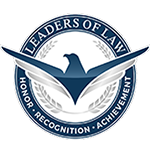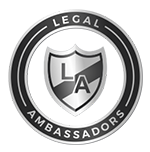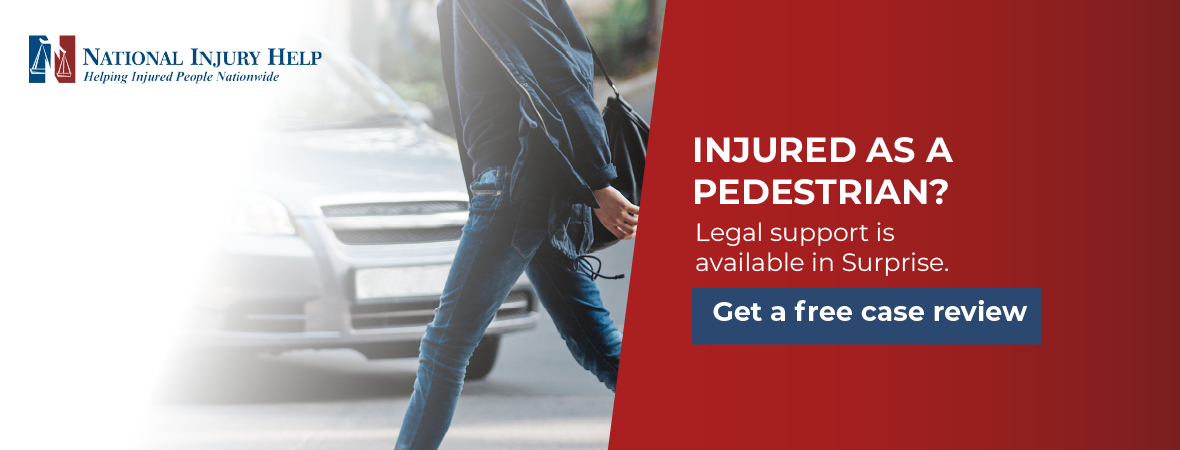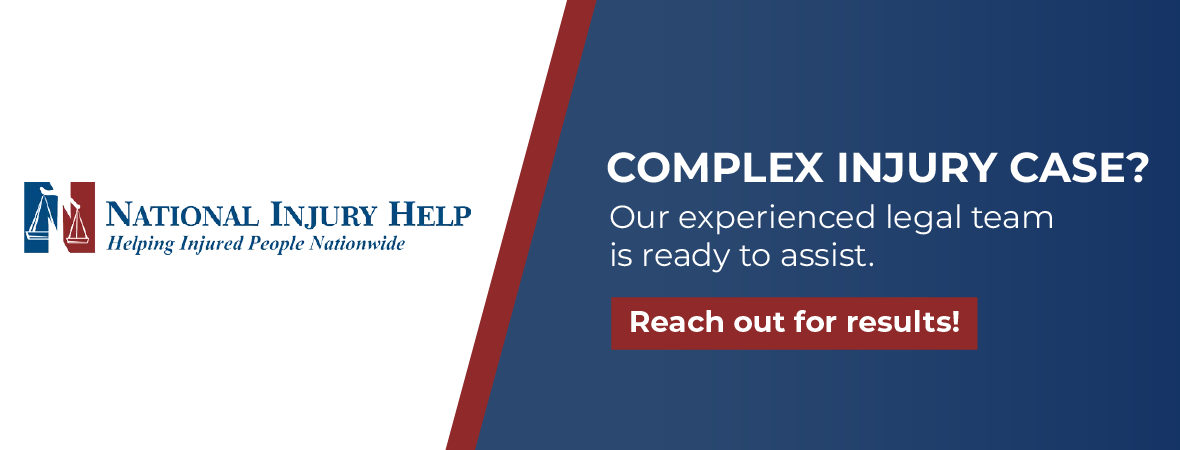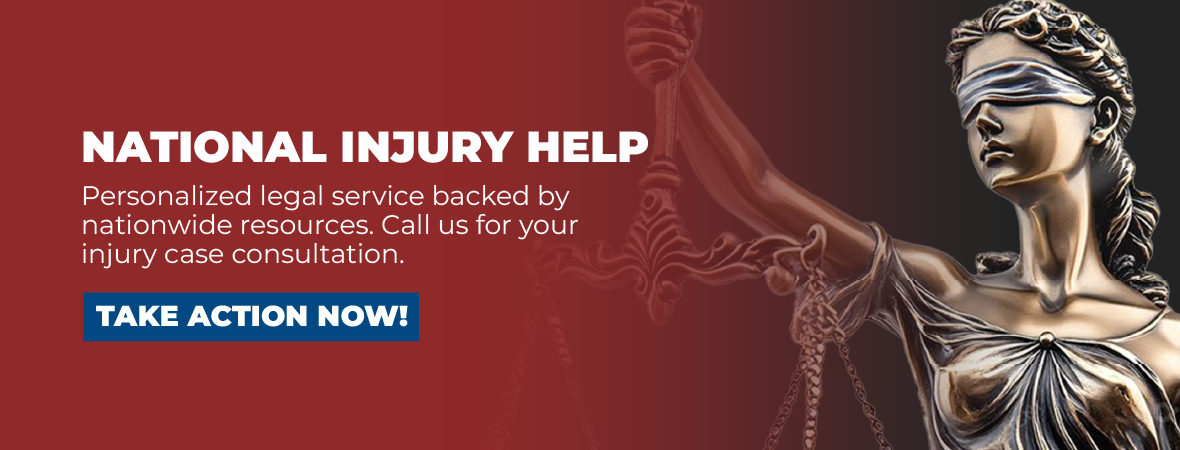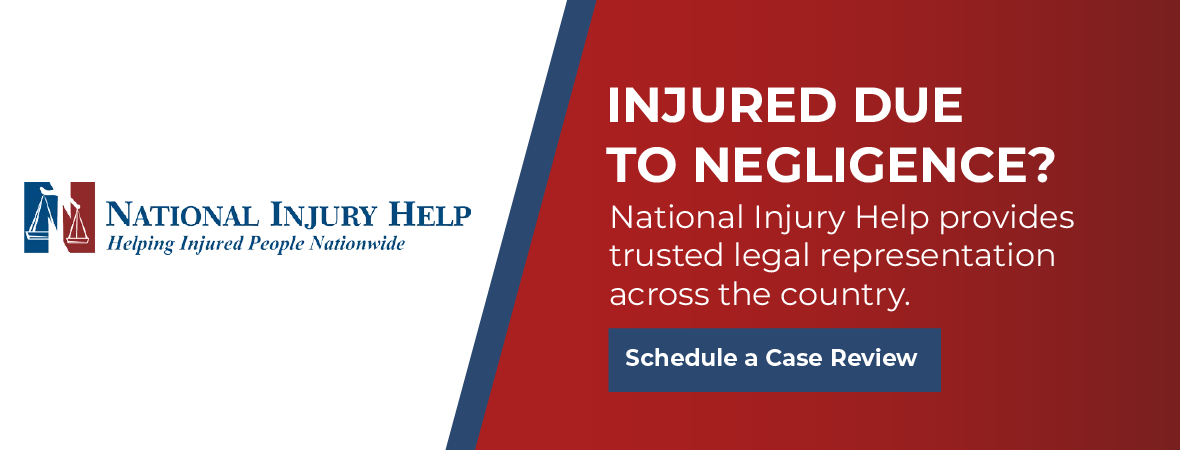Being hit by a car while walking in Surprise can lead to serious injuries and overwhelming expenses. Contact National Injury Help today at 1 (800) 214-1010.
Walking should be the safest way to move around town. You stay on the sidewalk, obey crosswalk signals, and expect drivers to see you. Yet one careless glance at a phone or one extra push on the gas pedal can place a two-ton vehicle between you and your next step. Pedestrian accidents often leave victims with catastrophic injuries because nothing stands between the body and the impact. Even the most cautious walker can be knocked down by a distracted or aggressive driver.
Arizona law recognizes the unique danger pedestrians face and lets injured walkers recover money for medical care, lost wages, pain, and other losses. To turn those rights into actual dollars, you must navigate insurance adjusters, strict deadlines, and rules about traffic faults in Arizona.
That journey is simpler and more successful when a local Surprise pedestrian accident lawyer guides you. Our team knows the roads, the local police report system, and the tactics insurers use to pay as little as possible. We are here to stand by your side and fight for the compensation you deserve.
Common Causes of Pedestrian Accidents According to a Surprise Pedestrian Accident Lawyer
Even busy intersections become safer when drivers follow simple rules, yet many choose distraction or risk. Each cause listed below appears over and over in police reports filed in Surprise and across Maricopa County. Recognizing these patterns helps you understand why a crash happened and how we prove fault later.
Distracted Driving
Phones have become traveling companions, but drivers who read texts, scroll music lists, or enter GPS addresses while moving take their eyes off the road at exactly the wrong time. A car that travels forty miles per hour covers nearly sixty feet in one second.
That distance equals the height of a six-story building, enough space for a driver to miss the green light turning red and a walker stepping off the curb.
Speeding and Reckless Driving
Some drivers treat wide roads like Bell Road as speedways. Even ten miles per hour over the limit can double the stopping distance. School zones and flashing crosswalks exist for a reason, yet reckless drivers ignore them to shave seconds off their trip. Higher speed multiplies the force your body absorbs and pushes injuries from painful to life-changing.
Failure to Yield at Crosswalks
Arizona statutes demand drivers yield when walkers are in a marked or unmarked crosswalk. Many motorists roll through right-on-red turns or rush left turns across oncoming traffic. High-risk areas in Surprise include the busy Grand Avenue corridor and the entrance ramps to Loop 303, where drivers often focus only on other vehicles.
Poor Visibility at Night or in Bad Weather
Street lighting varies block by block, and nights in Arizona can be darker than most people expect. Rain, dust storms, or early-morning fog reduce sightlines, and dark clothing can blend into the asphalt. Drivers must slow and remain alert, but some stick to daylight habits and fail to adjust for reduced visibility.
Drunk or Impaired Driving
Alcohol and drugs remain major factors in fatal pedestrian crashes across the state. Impaired drivers react slowly, misjudge distance, and drift across lanes without warning. Late-night traffic on weekend routes to bars and events around Surprise Stadium sees higher ratios of impairment, making vigilance critical for walkers relying on the right of way.
Surprise Pedestrian Accident Lawyer Explains What Arizona Law Says About Pedestrian Rights
State statutes spell out when drivers must stop, when walkers must yield, and how shared fault works. Understanding these rules prepares you for negotiations and courtroom arguments.
Arizona Right-of-Way Rules (ARS §28-792)
Under this statute, drivers must yield to a pedestrian who is in any part of the roadway on the same side as the vehicle. They must also stop when a pedestrian is approaching from the opposite direction and is close enough to be in danger. This duty applies whether the crosswalk is painted or implied at an intersection.
Crosswalk Laws in Urban and Residential Areas
Marked crosswalks enjoy bright signs and road paint, yet an unmarked crosswalk exists at every intersection. Drivers often claim a walker was jaywalking simply because no stripes were visible. We use photos and diagrams to show the legal crosswalk that the driver ignored.
Jaywalking and Shared Fault
If you cross between intersections, the driver still has a duty to exercise reasonable care. Under Arizona’s comparative negligence system, you may share a percentage of fault, but you can still recover damages. For instance, if you are found twenty percent at fault, your total award is reduced by that amount rather than eliminated.
Statute of Limitations for Pedestrian Injury Lawsuits
Most personal injury suits in Arizona must be filed within two years of the crash date. Evidence and memories fade quickly, so starting work well before the deadline lets us collect stronger proof. Cases involving city or state road design defects have shorter claim notices that can expire in six months.
With the legal foundation clear, we next outline the practical steps you should take immediately after a collision.
Surprise Pedestrian Accident Lawyer Explains What to Do After a Pedestrian Accident in Surprise
Action in the first hours and days after a crash protects both your health and your case. Follow each step as closely as possible, but remember that a lawyer can still help even if some details were missed amidst the chaos.
Call 911 and Get Immediate Medical Attention
Internal injuries may not appear until hours later, so let paramedics check your vital signs and transport you if needed. Tell doctors every symptom, no matter how small, so the record links all injuries to the crash.
File a Police Report
Ask responding officers to create a detailed report through the Surprise Police Department. Confirm that your statement is included and verify the correct spelling of your name, so insurers cannot claim you left the scene.
Collect Information and Evidence
When safe, photograph vehicle positions, traffic signals, skid marks, and your injuries. Take a clear picture of the license plate. Ask witnesses to text their names and phone numbers before they leave.
Don’t Talk to Insurance Without Legal Advice
Adjusters often call while you are still in pain. Give only your name, contact information, and the date of the crash. Politely refer all other inquiries to your attorney.
Contact a Local Pedestrian Accident Lawyer
A lawyer can send letters demanding that surveillance footage be preserved, can request black-box data from vehicles, and can guide you toward specialists who fully document long-term injuries.
We now explain the types of harm walkers most often suffer in these crashes.
Types of Injuries Common in Pedestrian Crashes
The human body is built to walk, not to absorb impact from metal moving at highway speeds. Each injury below carries unique medical and legal concerns.
Head and Brain Injuries
Concussions may linger with headaches and memory gaps. Skull fractures can require surgery and close monitoring for swelling. Traumatic brain injuries can change personality, speech, and balance forever.
Spinal Cord Injuries and Paralysis
Damage to the vertebrae or spinal cord can result in temporary or permanent loss of mobility. Some survivors need chairs and adaptive devices for life, which multiply future medical costs.
Broken Bones and Internal Bleeding
Legs, pelvis, arms, and ribs often fracture because the bumper hits lower limbs first, and the torso follows onto the hood or road. Internal bleeding is common and can threaten organs long before bruising shows outside.
Road Rash, Cuts, and Soft Tissue Damage
Sliding on asphalt tears skin, muscle, and nerve tissue. These wounds invite infection and can leave scars that require grafts or laser treatment years later.
Emotional and Psychological Trauma
Flashbacks, nightmares, and anxiety may limit your ability to resume normal activities. Professional counseling and medication become necessary yet expensive, so they belong in any settlement demand.
Knowing the injuries, we next identify every party who may share legal responsibility for your losses.
Surprise Pedestrian Accident Lawyer Explains Who Can Be Held Liable for Your Injuries
Blame can lie with more than one defendant, and each party often carries separate insurance.
The Driver
Speeding, texting, drinking, or ignoring crosswalk laws are direct breaches of duty. Proving these actions usually starts with officer observations, traffic camera footage, and cell phone records.
Third Parties
When a vehicle part fails, a manufacturer may share fault. Poor lighting, broken signals, or confusing lane markings can place liability on a government entity that designed or maintained the road.
Employers
Delivery drivers, rideshare operators, and company salespeople drive for work. Their employers may cover damages under vicarious liability, giving you access to higher corporate insurance limits.
Shared Fault Situations
If you stepped into traffic outside a crosswalk or ignored a Don’t Walk signal, you may receive a percentage of fault. Arizona law allows recovery in these cases, and each percentage point we shift back to the driver means more money in your pocket.
How a Surprise Pedestrian Accident Lawyer Can Help You
Legal support is not only about courtrooms. It is about organizing facts, protecting evidence, and guiding you through each difficult decision.
Launch an Immediate Investigation
We visit the crash site, photograph fresh skid marks, and measure sight lines. We request nearby business surveillance footage before it is erased and speak with witnesses while memories are intact. Accident reconstruction specialists model speed and stopping distance to show exactly how the collision occurred.
Deal With the Insurance Companies
Adjusters sometimes delay until medical bills pressure victims to accept low offers. We submit complete demand packages with medical proof, set clear deadlines, and file complaints when carriers stall. Every communication goes through us, so you focus on healing.
Connect You With Medical Experts
We maintain a network of neurologists, orthopedic surgeons, and physical therapists who understand litigation requirements. Their records and testimony strengthen your case and estimate future costs truthfully.
File a Lawsuit if Necessary
When negotiations fail, we’ll file a lawsuit. Discovery forces the defense to share black-box data, dashcam video, and driver personnel files. Trial preparation increases leverage, and if the court becomes the best path, we will present your story clearly to a jury.
No Upfront Fees, You Only Pay If You Win
Our contingency model removes the financial barrier to justice. We advance filing fees, expert costs, and record charges out of our own pocket. If we do not secure compensation, you owe us nothing.
Compensation You May Be Entitled To
In Arizona, injured individuals have the right to recover various types of compensation designed to address the complete impact of their injury, physically, emotionally, and financially. Understanding how each category works helps you make sure your claim fully reflects your loss and the resources you need moving forward. Here’s a detailed look at the types of damages available to you:
Medical Expenses
Medical care is often the most obvious and critical area of loss following an injury. These expenses can be overwhelming and continue long after the incident itself.
- Ambulance transport and initial stabilization in an emergency room.
- Diagnostic procedures, such as X-rays, CT scans, MRIs, and lab work that confirm the severity and nature of the injury.
- Surgical intervention, including equipment, operating room fees, and anesthesiology.
- Inpatient hospital stays, whether care is received in a general ward, intensive care unit, or specialty unit.
- Rehabilitation and therapy: physical therapy, speech therapy, occupational therapy, inpatient rehabilitation as needed.
- Medical devices and durable equipment, such as wheelchairs, braces, walkers, hearing aids, prosthetics, or other assistive devices.
- Long-term treatment plans, including chronic pain management, spinal drainage, wound care, injections, or chiropractic care.
- Prescription medications: long-term medication costs, for example, muscle relaxants, pain relievers, or mood stabilizers.
- Future procedures, such as reconstructive surgery or additional operations, if recommended by your doctor.
- Travel and lodging: costs associated with receiving treatment far from home, including gas, hotel stays, parking, mileage, and meals.
These medical expenses should be supported by detailed bills, medical records, prescription logs, and professional cost estimates. Cost estimates from medical providers or life-care planners that project future care based on your needs and prognosis are essential.
Having this documentation helps ensure no expense is overlooked and demonstrates both current needs and future treatment plans.
Lost Wages and Future Earning Capacity
Injuries often mean time away from work or the inability to return at full strength. Arizona law allows you to recover income you may have lost due to your injury and the long-term impact on your earning ability.
- Actual wages lost from time off work, pay stubs, employer letters, or tax data prove this.
- Depletion of sick leave or vacation time used to cover recovery.
- Self-employment income loss, including missed opportunities, canceled projects, or lower productivity.
- Permanent or long-term disability may limit your ability to work in your previous role or at all.
- Career changes forced by injury: economists analyze past trajectory, age, education level, and projected earnings to estimate future income loss.
- Benefits and retirement: pension contributions and future raises that you will no longer receive due to early retirement or part-time changes.
Economists and vocational experts are often necessary to quantify these future losses accurately and credibly. That ensures the recovery reflects all areas where your income has been impacted, present and future.
Pain and Suffering (Non-Economic Damages)
Not all losses are measurable by receipts. Arizona recognizes that non-physical harm must also be compensated.
Physical Pain
- Chronic pain, nerve damage, headaches, joint stiffness, and general discomfort all fall under this category.
- Pain diaries, physician notes, medication logs, and therapy records serve as evidence of ongoing discomfort and daily impact.
Emotional Trauma
- Depression, anxiety, fear, PTSD, and mood disorders are common after serious injury.
- Mental health treatment records, counseling notes, and prescriptions for anxiety or depression demonstrate this portion of the loss.
- Personal journaling (optional) can help describe how your life changed and support your claim.
Diminished Quality of Life
- Hobbies, social activities, exercise, or leisure pursuits that no longer bring joy or are impossible due to injury.
- Witness accounts, testimony from family or friends, and day-in-the-life descriptions paint a vivid picture for juries or opposing counsel.
Arizona law allows you to recover all these non-economic damages, an acknowledgment that emotional and physical suffering holds real value, even if it’s not itemized with a price tag.
Permanent Disfigurement or Disability
Long-term impairments can permanently alter your appearance, abilities, and everyday life.
- Scarring on visible areas like the face, arms, neck, or hands.
- Changes such as burns or facial trauma that cannot be fully corrected through surgery.
- These emotional and social impacts are subject to monetary compensation.
- Conditions such as limb amputation, nerve damage, spinal cord injury, or cognitive impairment become long-term challenges.
- Your daily life may require assistive care, adaptive equipment, home modifications, or personal support.
- A life-care plan can project future expenses for medical care, assistive devices, and help around the house, from wheelchair ramps to full-time caregiver services.
Non-fatal permanent disability carries significant emotional weight and long-term cost, both of which are recognized in the compensation structure.
Wrongful Death Benefits
When an injury leads to death, Arizona law allows for a wrongful death claim to compensate surviving family members for their loss. Eligible individuals include spouses, children, parents, and sometimes personal representatives filing on behalf of the estate. Some of the recoverable losses include:
- Funeral and burial services, including all related expenses.
- Final medical and hospital expenses from the time of injury to death.
- Loss of income based on what the deceased would have contributed if they had lived.
- Loss of companionship, guidance, and support, both emotional and financial.
Because wrongful death claims involve multiple losses and multiple parties, compensation aims both to settle final expenses and to acknowledge the profound emotional and future impact on surviving loved ones.
Punitive Damages
Arizona allows punitive (or exemplary) damages when the defendant’s conduct is particularly severe, not just negligent, but grossly reckless, malicious, or intentional. Examples include:
- Driving while significantly intoxicated
- Driving at extremely high speeds or racing through school zones
- Intentionally endangering others by ignoring safety regulations
- Willful failure to repair known hazards, like maintaining brakes in a rideshare vehicle
Punitive damages are intended not to compensate a plaintiff but to punish the defendant and dissuade similar behavior by others. Courts scrutinize these awards to ensure fairness in line with Arizona law.
How to Build a Complete Damage Claim
To recover the maximum compensation, your attorney will assemble a comprehensive case:
- Medical documentation: Hospital bills, imaging reports, diagnostic statements, and prescriptions.
- Proof of income loss: Pay stubs, tax returns, employment records, and economist reports.
- Evidence of pain and emotional suffering: Therapy notes, injury diaries, mental health letters, and personal statements.
- Experts for future costs: Life-care planners, vocational specialists, and home renovation cost estimators.
- Visual materials: Photos showing scars, medical records, diagrams of injuries, and pictures of adaptive equipment or home modifications.
FAQs About Pedestrian Accident Claims in Arizona
Do I need a lawyer if I was hit in a crosswalk?
Legal help improves results even in clear liability cases because insurers still fight medical costs and pain-and-suffering amounts.
What if I wasn’t in a crosswalk?
You can still file a claim even if you weren’t on a crosswalk. Comparative negligence may reduce damages, but usually does not bar recovery.
Will the driver go to jail?
Criminal charges depend on factors such as impairment, reckless speed, or hit-and-run incidents. Your civil case for compensation is separate and can proceed regardless of the outcome of your criminal case.
What happens if I was partially at fault?
Arizona’s comparative negligence rule still allows you to recover damages even if you were partially at fault. Your award decreases by your percentage of fault. Strong evidence shifts that percentage toward the driver.
How long does a pedestrian accident case take to settle?
Minor injuries may close within months. Serious injuries with future care costs can take a year or more, especially if trial dates are required.
Talk to a Surprise Pedestrian Accident Lawyer Today
If you or someone you love was hit by a car in Surprise, Arizona, you may be feeling overwhelmed, hurt, and unsure of what to do next. Pedestrian accidents can cause life-changing injuries, and the physical, emotional, and financial impact often lingers long after the crash.
At National Injury Help, we stand with victims from the very first moment. Our team knows how to investigate pedestrian crashes, gather traffic camera footage, interview witnesses, and hold negligent drivers accountable. Whether the driver was distracted, speeding, or simply failed to yield, we work to build a strong case that gets results.
Insurance companies often try to blame the pedestrian or minimize injuries. That is why it is important to have a legal team that knows how to push back and protect your rights. We understand the laws in Arizona and how to prove fault, even in difficult situations.
You deserve answers, accountability, and full compensation. That can include medical bills, time missed from work, long-term care, and the pain and trauma caused by the accident.
We offer a free consultation and do not charge any legal fees unless we recover money for you. Our lawyers serve the entire Surprise area and its surrounding communities. You focus on healing. Let us take care of the rest.
Call 1 (800) 214-1010 today to speak with a Surprise crosswalk accident attorney who is ready to listen and ready to fight.


